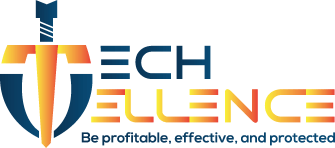 How the Techellence CIO enabled the highest revenue in the company’s history of $1.5B amid uncertain times while supporting a massive, nationwide retail organization of 70+ stores and 10+ warehouses with a small IT workforce.
How the Techellence CIO enabled the highest revenue in the company’s history of $1.5B amid uncertain times while supporting a massive, nationwide retail organization of 70+ stores and 10+ warehouses with a small IT workforce.
As the chief IT executive directing business strategy, Dr. Sang Sur provided vision and oversight for the technical needs of 70+ stores and 10+ warehouses across the US. He developed the strategic IT growth plan, established the vision, and implemented employee training to focus on customer needs and continual improvement for scalability and growth. The team consisted of 50 IT personnel, of which seven (7) members handled remote operations in the western and southern regions of the United States.
His customers were all employees who used technology to meet and exceed the organization's vision. Dr. Sur sought to ensure their success because their gain was his. The stakeholders were naturally their leaders, the chiefs of business operations. Specifically, the stakeholders were the president of the company and all his direct reports, such as those who led operations, finance, HR, eCommerce, and others.
Dr. Sur reorganized the structure of the IT department by having two directors under him who led four capability teams. One director led Product Development and Infrastructure; the other led Service Management (Project and Vendor Management, including the company-wide ERP system) and IT Field Services. Each of the four teams had a manager who oversaw the detailed work. The four managers, the two directors, and Dr. Sur made up the IT Leadership team. Dr. Sur reported directly to the president of the company.
Due to a small workforce with many responsibilities, Dr. Sur outsourced certain activities. Due to increased cybersecurity activities, he hired one contractor to supplement his infrastructure team while seeking other qualified personnel. He also hired an outside company to perform penetration tests at random intervals and monitor the current network. Another vendor was assigned as a consultant and provider of the Enterprise Resource Planning (ERP) system to provide support and services as his team identified new needs.
Dr. Sur intentionally separated the IT teams to focus on their critical deliveries:
The critical delivery of the Product Development team is to provide the highest value to the company. He personally reviewed each improvement request and prioritized them bi-weekly, justifying the highest profitability, reduction of highest costs, or other intangible benefits as he discussed them with other leaders in the company.
The critical delivery of the Infrastructure team is to ensure the highest security yet efficiency for all technology users. Their roles included monitoring the network, handling potential threats, identifying enterprise-wide system configurations, instructing IT Field Services with how-to's, and ensuring optimization in ever-changing environments.
The critical delivery of the Service Management team is ensuring timely, costly, and quality success of enterprise projects. With that responsibility, they managed resources within and outside the company. They ensured the vendors provided the highest value while minimizing excessive costs to ensure organizational success.
IT Field Services delivered effectiveness from anywhere in the country. When users reported a problem, they responded quickly with their interconnected team, who can diagnose issues remotely. When the issue needed to be handled in person, they handled it or worked it through a third-party vendor when resources were limited.
As a result of the restructuring and focusing the teams on their strength while also supplementing routine needs with capable vendors and contractors, Dr. Sur was able to support the massive, nationwide retail organization and protect it from ever-increasing cybersecurity threats. He proactively met the most critical needs of 70+ stores and 10+ warehouses with a small IT workforce enabling the company's highest revenue of $1.5B amid the uncertain times caused by the Coronavirus pandemic.

 How the Techellence CIO generated profits handling acquired companies for a global Fortune 500 software company leading to a successful exit of $18.9B.
How the Techellence CIO generated profits handling acquired companies for a global Fortune 500 software company leading to a successful exit of $18.9B.  What is the role of an IT organization? A response from the Techellence CIO, who established a flourishing IT organization that other departments aspire to join.
What is the role of an IT organization? A response from the Techellence CIO, who established a flourishing IT organization that other departments aspire to join.  How the Techellence CIO enabled $53M revenue, exceeding aggressive projections by more than 35%, by successfully handling an acquisition transition of a $550M investment.
How the Techellence CIO enabled $53M revenue, exceeding aggressive projections by more than 35%, by successfully handling an acquisition transition of a $550M investment.  How the Techellence CIO manages change by tackling the highest priority issues increasing customer (corporate employees and leaders) satisfaction and trust by 30%+.
How the Techellence CIO manages change by tackling the highest priority issues increasing customer (corporate employees and leaders) satisfaction and trust by 30%+.  How the Techellence CIO directed IT governance, transforming CMMI level 1 organization to that of level 4.
How the Techellence CIO directed IT governance, transforming CMMI level 1 organization to that of level 4.  How the Techellence CIO rehabilitated the software development team to focus more on the customers, directly impacting the company’s profitability and reducing financial losses.
How the Techellence CIO rehabilitated the software development team to focus more on the customers, directly impacting the company’s profitability and reducing financial losses.  How the Techellence CIO further reduced attrition and morale loss of people whose companies were being acquired, facilitating acquisition integration success.
How the Techellence CIO further reduced attrition and morale loss of people whose companies were being acquired, facilitating acquisition integration success.  How the Techellence CIO enabled a $2M startup to build a globally scalable efficient system.
How the Techellence CIO enabled a $2M startup to build a globally scalable efficient system.